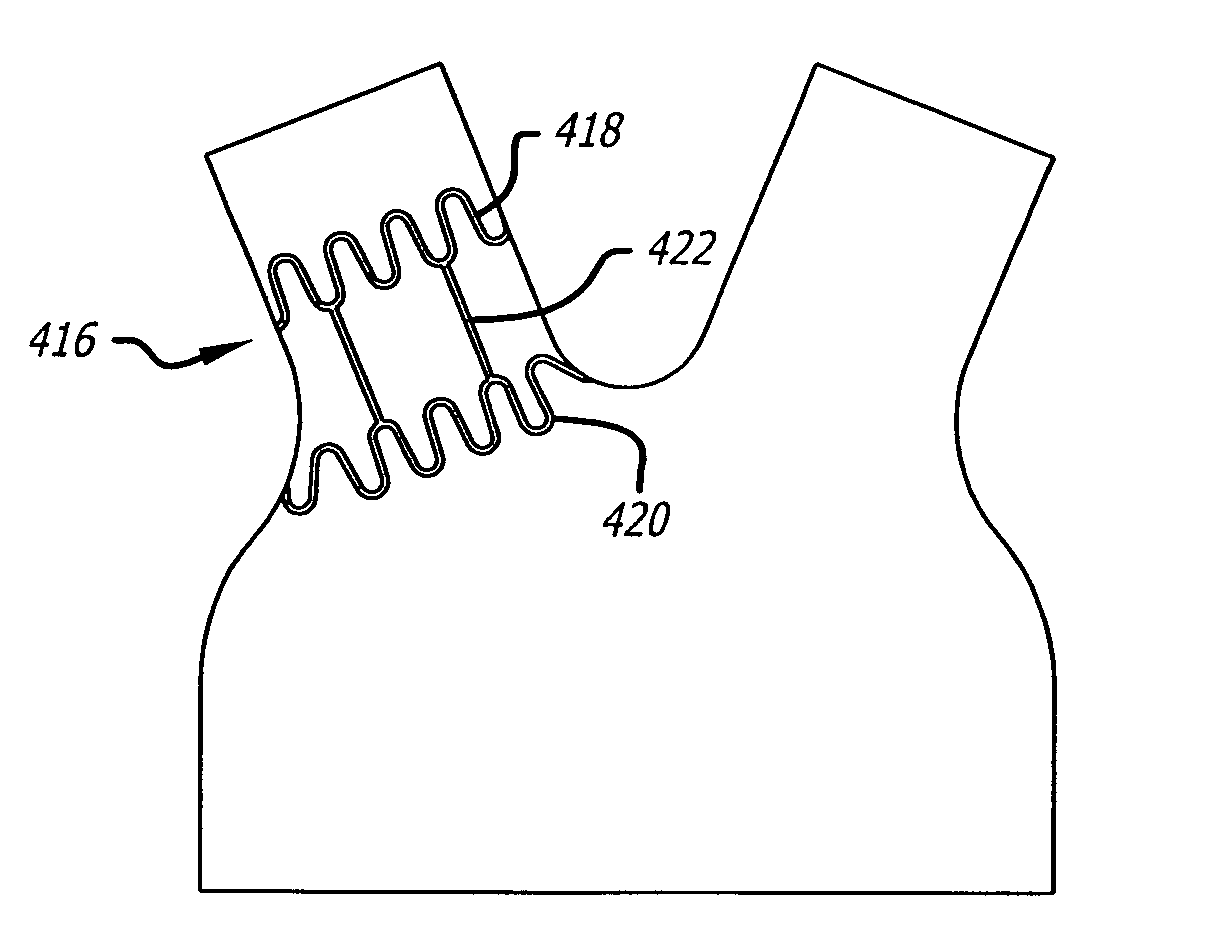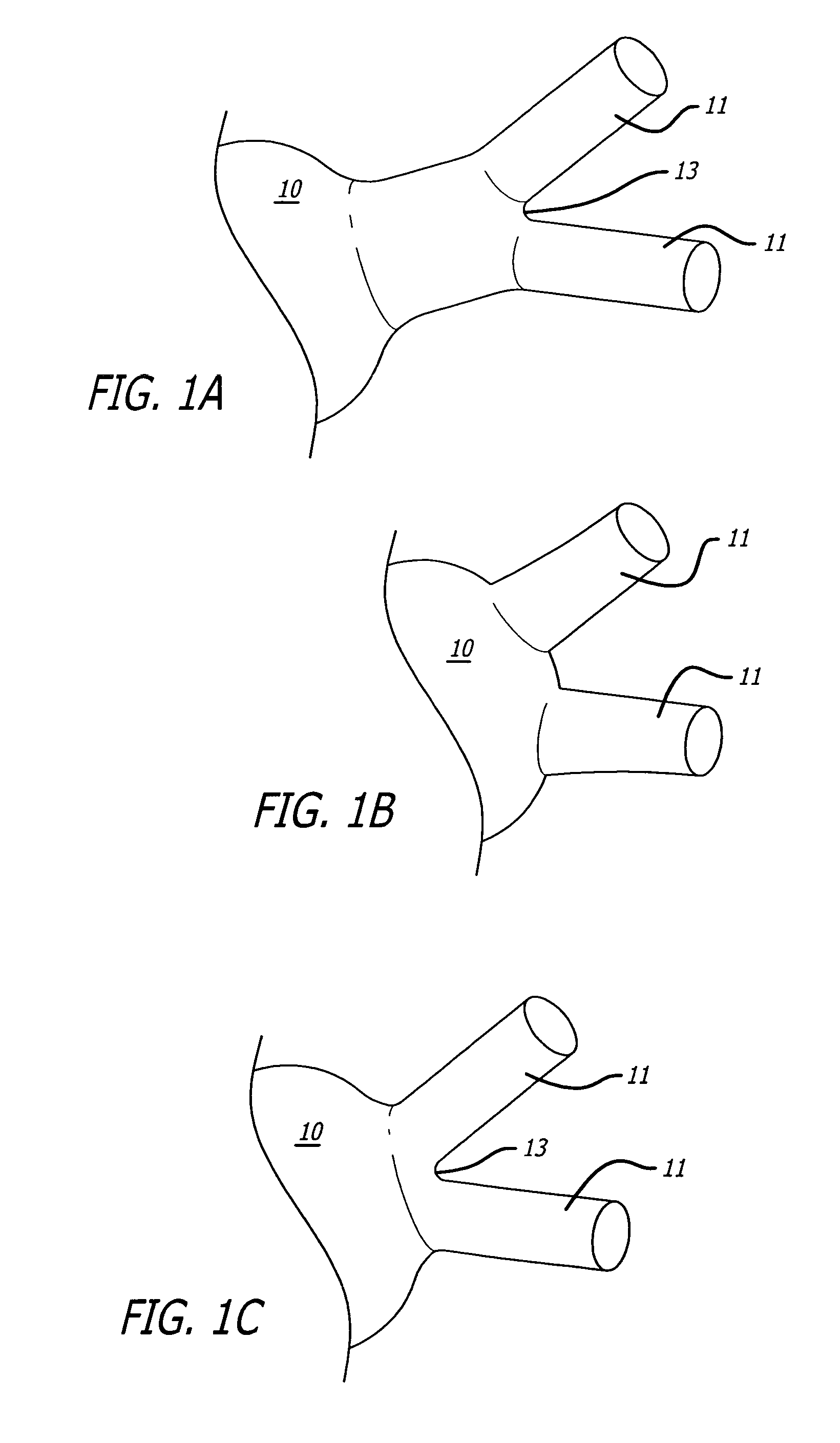Electrical conduction block implant device
a technology implant device, which is applied in the field of electric conduction block implant device, can solve the problems of abnormal heart rhythm, blood pooling and even clotting inside the atrium, and can be very serious, and achieve the effect of blocking aberrant electrical signals in safe and effective ways
- Summary
- Abstract
- Description
- Claims
- Application Information
AI Technical Summary
Benefits of technology
Problems solved by technology
Method used
Image
Examples
Embodiment Construction
[0074]The ostium of the pulmonary veins has a highly variable geometry from one patient to another and this presents difficulty in reliably treating atrial arrhythmias using previous methods. That is, the variable geometry has in the past made it difficult to reliably create a continuous line of electrical block around the perimeter of the ostium in each and every patient.
[0075]In illustration of this point, FIGS. 1A-1C present three ostium geometries that can occur in the general human population. These Figures show a left atrium 10 of a human heart wherein two adjacent pulmonary veins 11 may originate directly from two ostia in the left atrium (FIG. 1B) or may originate from one ostia in the left atrium followed by a bifurcation 13 downstream of the left atrium. Moreover, the bifurcation 13 may be located near the left atrium (FIG. 1A) or far from the left atrium (FIG. 1C). Finally, various hybrids of these geometries are also possible as some people can have more or less than the...
PUM
 Login to View More
Login to View More Abstract
Description
Claims
Application Information
 Login to View More
Login to View More - R&D
- Intellectual Property
- Life Sciences
- Materials
- Tech Scout
- Unparalleled Data Quality
- Higher Quality Content
- 60% Fewer Hallucinations
Browse by: Latest US Patents, China's latest patents, Technical Efficacy Thesaurus, Application Domain, Technology Topic, Popular Technical Reports.
© 2025 PatSnap. All rights reserved.Legal|Privacy policy|Modern Slavery Act Transparency Statement|Sitemap|About US| Contact US: help@patsnap.com



